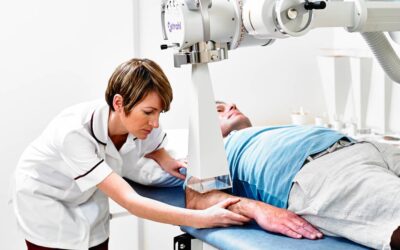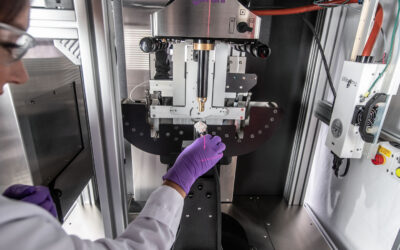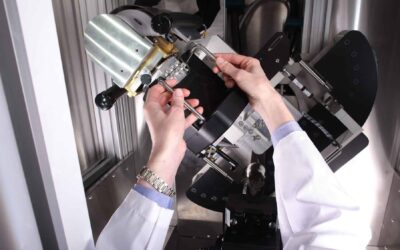Stem cell therapies are being developed for radiotherapy-induced brain injuries (RIBI). Magnetic resonance imaging (MRI) offers advantages for imaging transplanted stem cells. However, most MRI cell-tracking techniques employ superparamagnetic iron oxide particles (SPIOs), which are difficult to distinguish from hemorrhage. In current preclinical RIBI models, hemorrhage occurs concurrently with other injury markers. This makes the evaluation of the recruitment of transplanted SPIO-labeled stem cells to injury sites difficult. Here, we developed a RIBI model, with early injury markers reflective of hippocampal dysfunction, which can be detected noninvasively with MRI and behavioral tests. Lesions were generated by sub-hemispheric irradiation of mouse hippocampi with single X-ray beams of 80 Gy. Lesion formation was monitored with anatomical and contrast-enhanced MRI and changes in memory and learning were assessed with fear-conditioning tests. Early injury markers were detected 2 weeks after irradiation. These included an increase in the permeability of the blood-brain barrier, demonstrated by a 92 ± 20 % contrast enhancement of the irradiated versus the non-irradiated brain hemispheres, within 15 min of the administration of an MRI contrast agent. A change in short-term memory was also detected, as demonstrated by a 40.88 ± 5.03 % decrease in the freezing time measured during the short-term memory context test at this time point, compared to that before irradiation. SPIO-labeled stem cells transplanted contralateral to the lesion migrated toward the lesion at this time point. No hemorrhage was detected up to 10 weeks after irradiation. This model can be used to evaluate SPIO-based stem cell-tracking agents, short-term.
Ngen EJ, Wang L, Gandhi N, Kato Y, Armour M, Zhu W, Wong J, Gabrielson KL, Artemov D.
Download Paper
Xstrahl to Highlight Superficial and Orthovoltage Radiotherapy Solutions for Skin Cancer and Selective Benign Conditions at AAPM 2024
Xstrahl, a global leader in the delivery of superficial radiation therapy devices and preclinical radiation research systems, will demonstrate Xstrahl 200, a modern orthovoltage radiotherapy solution for treating superficial lesions, skin cancers, and selective benign conditions at the 66th Annual Meeting & Exhibition of the American Association of Physicists in Medicine (AAPM) in Los Angeles, CA, from July 21-25, 2024, at booth 518.






